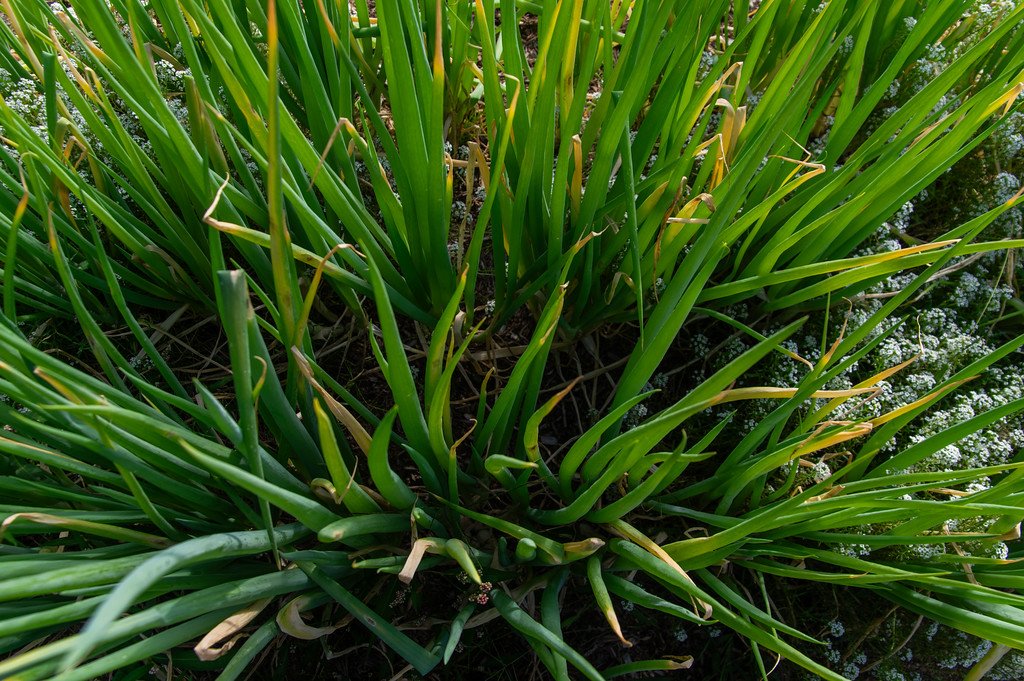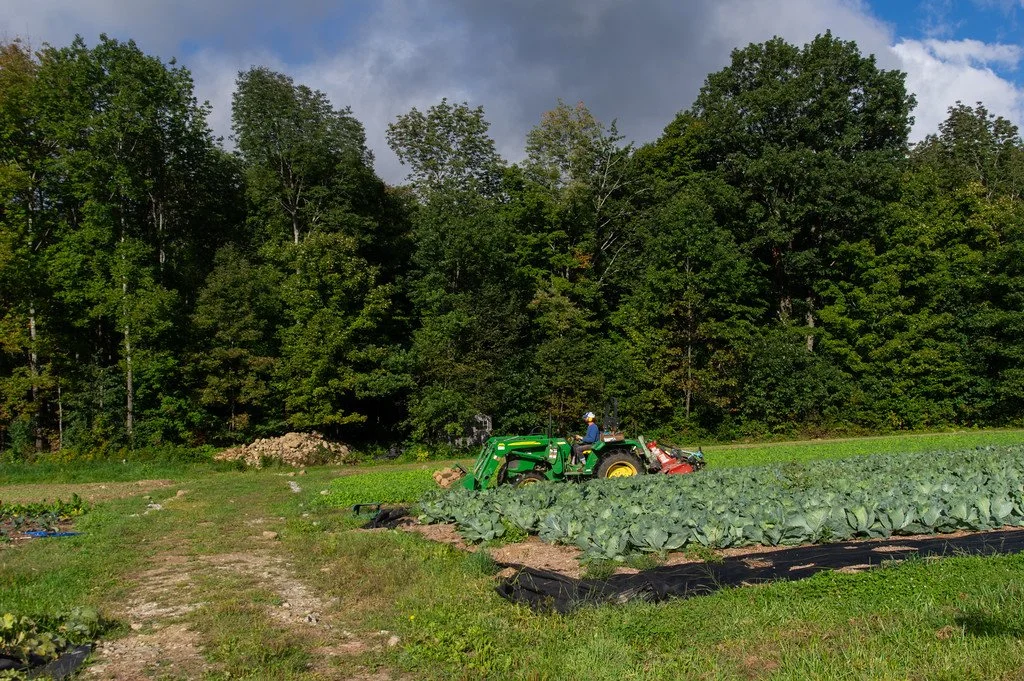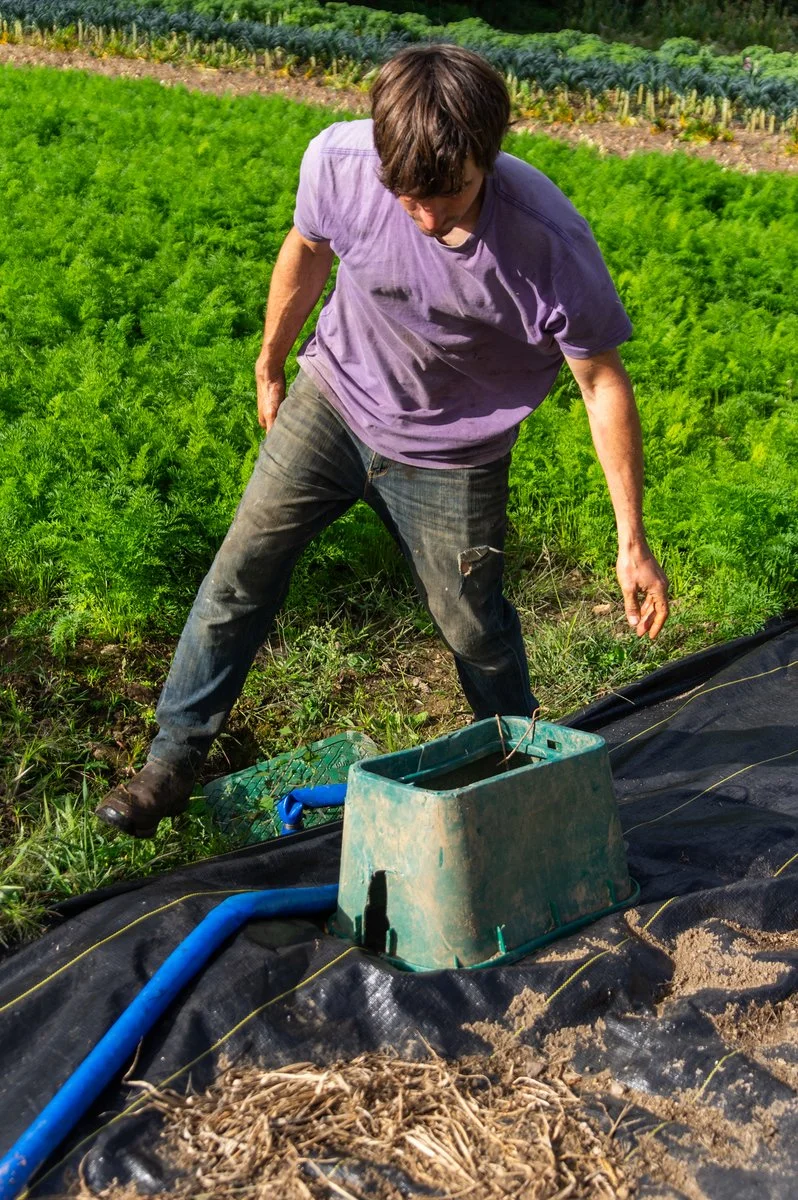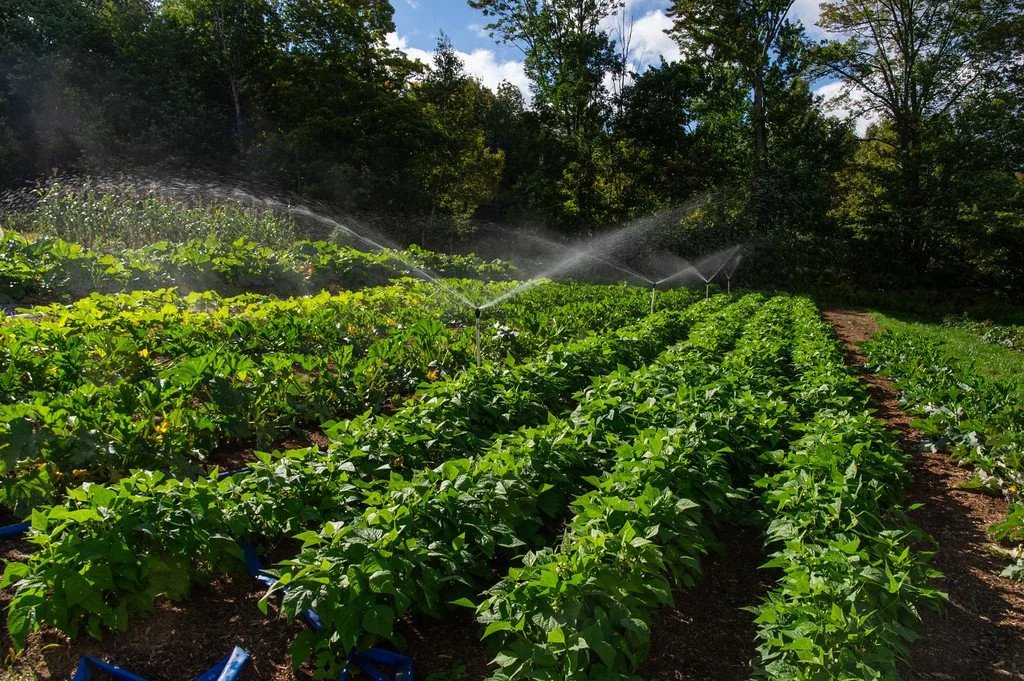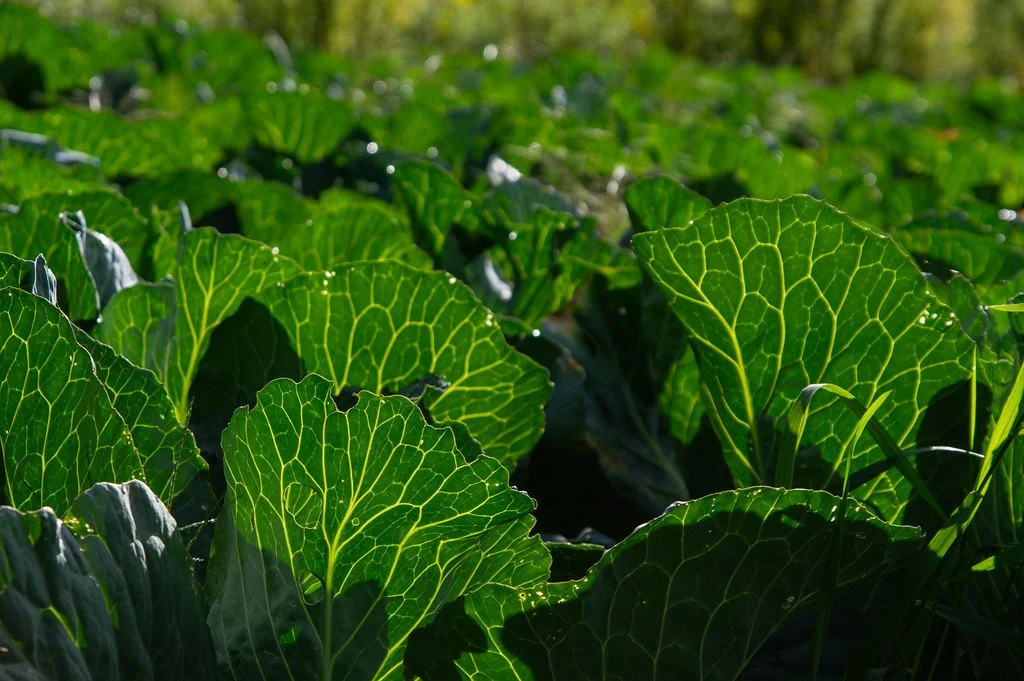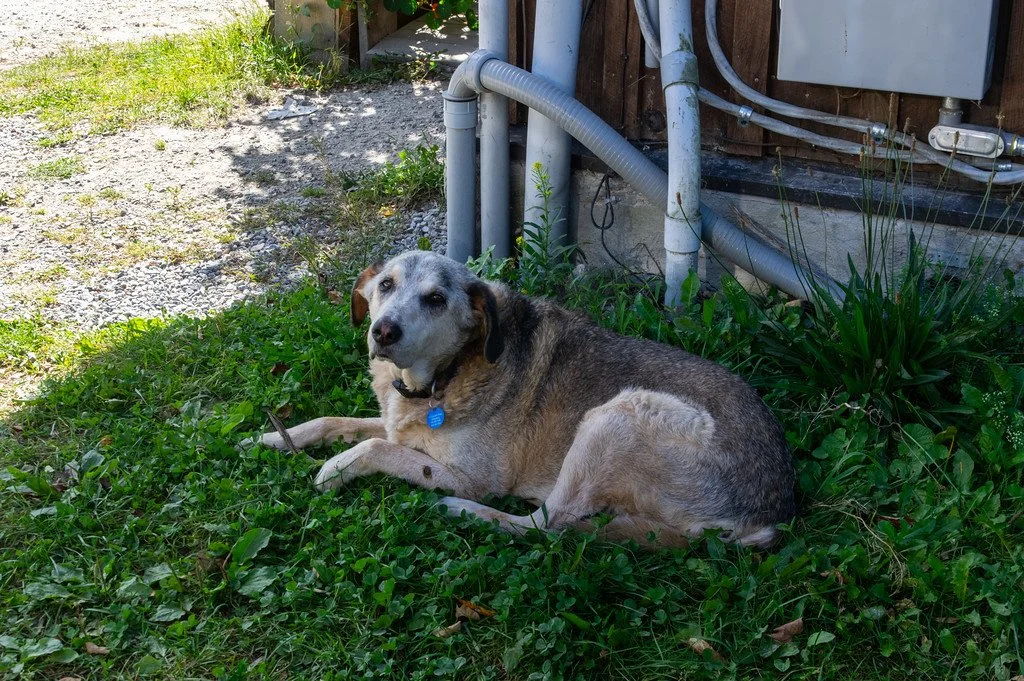15th Week of the Summer CSA Season: Week of September 17th
fall greens look beautiful, photo by Adam Ford
This Week’s Availability
This week we will have
Greens: baby lettuce, spinach, arugula, green curly kale bunches, lacinato kale bunches, rainbow chard, brussels crowns, bok choi
Roots: carrots, new yellow potatoes, new red potatoes
Alliums: onions, garlic, scallions, garlic scapes, shallots, leeks
Fruiting Crops: tomatoes*, cherry tomatoes, tomatillos, sweet Italian Carmen peppers, red bell peppers, jalapeno peppers, spaghetti squash, husk cherries, green beans, green tomatoes
Herbs and Miscellaneous: parsley, rhubarb, celery, cilantro, broccolini
*The large tomatoes have slowed waaaay down in ripening, so instead of listing them separately on the order site as beefsteak and heirloom, we are listing them together, because we just don’t know what volume of either will be ready for this week. If you have a preference for beefsteak or heirloom when you order “tomatoes” for the week, you can make that note in the comment section, and we will do our best, but just know you may get one type or the other. Thanks!
We listed several items available for bulk purchasing at wholesale pricing on the online platform. This week we have garlic, onions, brussels crowns, carmen, and frozen elderberries available in bulk amounts if you do any preserving for winter. If you pick up at the barn and want to order any of those items in bulk, just send us an email.
broccolini getting washed, photo by Katie Hollebeek
green tomatoes, photo by Adam Ford
cherry tomatoes coming in, photo by Adam Ford
Farm News
This time of year is a big transition time around here… not quite as wild as spring, but close behind. We rip out the summer plants from the tunnels, thank them for their abundance, add the plant material to the compost piles, top off the beds with finished compost, and plant 3 tunnels of winter greens. We also harvest out the last bits of crops from certain fields outside to make them available for the last round of cover crop seeding of the season.
Last fall Ryan experimented with growing cover crops on a field he created ridges of soil in. The oats and peas died over the winter and then we set a band of compost on the top of the ridge before planting onions. The valleys in between the ridges were heavily mulched with straw. This method grew excellent onions, and we were able to judicially use compost just down a line where the onions grew, versus covering an entire 48-inch bed top with compost.
Based on that experimental success, before cover cropping this fall, Ryan created a few fields with ridged, seeded cover crops, and then Bryan and Ryan flattened the tops of the ridges. Because it’s been so dry, with no rain in the forecast, Ryan put some irrigation on the seeded fields to get a good germination of those cover crop seeds. These ridged fields will grow a cover crop blend of winter field peas and triticale (a wheat/rye hybrid). This cover crop will overwinter and will grow vigorously in the spring. When it starts flowering we will mow the tops of the ridges, flatten all the cover crop stems into the valleys, and set bands of compost on top of those ridges. We are optimistic that this will be an effective way to grow really healthy vegetables.
Creating ridges is a soil disturbance under the wide umbrella of “tillage”. While there are many farms that use no tillage at all—and other farms that use tillage in ways that undermine the fertility of the land they manage—it’s too simple to say that all tillage is “bad” and withholding all tillage is “good” for managing agricultural land. The tillage involved in preparing the soil in these fields includes subsoiling: pulling a beefy metal shank through the soil to loosen up the hard compacted subsoil in our glacially deposited soils. Thoroughly loosening this compacted subsoil can allow plant roots to penetrate deeper into the soil, and can improve the ability of soil microbes to access the oxygen and nitrogen in our atmosphere. It will also improve the ability of our soil to infiltrate water into deeper soil layers, providing a greater water reserve for plants in times of limited rainfall. Growing a robust network of cover crop roots in this newly disturbed soil will create a network of channels to organize the newly loosened soil. These plant roots and their associated symbiotic microbial communities will bind individual soil particles together. This process, known as soil aggregation, “glues” soil particles together into aggregates that keep them stable while allowing pore spaces for air and water to move through the soil. Well aggregated soil functions like the inside of a loaf of bread, whereas poorly aggregated soil is more like a pile of loose flour. While water can readily infiltrate a loaf of bread, it would run right off the surface of the flour, carving channels out of the pulverized particles. Years ago our farm relied on a rototiller to prepare our soil for planting, and we saw first hand how the repeated pulverization of our soil led to the decrease in the fertility of our soil. We’re grateful that we’ve learned different forms of tillage and growing practices that allow us to grow healthy and abundant crops without undermining the health of our soil. One of the big advantages of setting up ridges in this way is that after this initial and significant soil disturbance, these ridges will remain in place for several years with little if any soil disturbance.
We got the grain corn harvested this week after the blue jays had a true jubilee ravaging it. (But we still got plenty!) We pulled the husks back and set them to dry with fans in the root cellar. And we got most of the cured onions clipped and into root cellar storage as well. Next week we will try to get all the winter greens transplanted into the first tunnel, and then start removing plants from the next tunnels for the same transition.
Have a great week,
-ESF Team: Ryan, Kara, Galen, Bryan, Cindy, K2, Katie, Vanessa, Evan, and Taylor (and Sky and Soraya)
Weekly Recipe
photo by Adam Ford
photo by Adam Ford
scallions in the field, photo by Adam Ford
photo by Adam Ford
Evan and Vane harvesting cherry tomatoes, photo by Adam Ford
photo by Adam Ford
Katie bagging in the wash station, photo by Adam Ford
we experimented growing some dry beans, photo by Adam Ford
fall cabbage field on the right, photo by Adam Ford
before removing the cucumber plants, photo by Adam Ford
a couple weeks after transplanting these morning glories and scarlet runners, we though they weren't going to grow that much this year, ha! photo by Adam Ford
Bryan and Cindy on the field rock removal team for a day, photo by Adam Ford
Ryan fixing some irrigation, photo by Adam Ford
Sophie loves standing on top of her hut, photo by Adam Ford
watering zucchini and green bean field to get clover seeds to germinate, photo by Adam Ford
fall greens, photo by Adam Ford
photo by Adam Ford
a quick planting of lettuce we snuck between celery and peppers in one of the tunnels, photo by Adam Ford
photo by Adam Ford
look at those beautiful clouds, photo by Adam Ford
and one of our plum trees is loaded with treats, photo by Adam Ford
gorgeous cabbage leaves, photo by Adam Ford
all tomato rows out, and one cucumber row down, photo by Adam Ford
two cucumber rows out, photo by Adam Ford
above the flower garden above the barn... there are still lots of flowers to pick, and also it's super fun to collect dried flower seeds to use at your place, photo by Adam Ford
big rock mountain from a couple years of removing them from the field, photo by Adam Ford
Bella and Noel, photo by Adam Ford
and Echo loves greeting CSA members, photo by Adam Ford
fall zukes, photo by Adam Ford
beneficial flower clump among the lacinato kale, photo by Adam Ford







